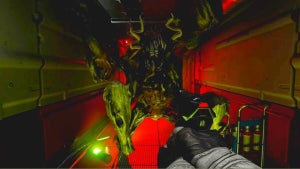News
How to watch the Ring of Fire eclipse on October 14, 2024
The moon seems too small to completely block the sun, creating a bright ring like Elden Ring.

- October 11, 2023
- Updated: March 7, 2024 at 2:17 PM
It’s an exciting time for astronomy enthusiasts, as October is expected to bring a dazzling solar event. The only downside is that many of you won’t be able to observe it from your country.
On October 14, an annular solar eclipse will occur, visible from some parts of the USA, Mexico, Central America, and South America. Unlike a total solar eclipse, where the Moon completely covers the Sun, an annular eclipse occurs when the Moon is in the farthest part of its orbit from Earth.
Due to the distance, the moon appears too small to completely block the sun, creating a bright ring of sunlight around a dark lunar silhouette. This is often referred to as the “ring of fire” and is awe-inspiring, as you can see in the images.
What do you need to safely view the eclipse?
To safely view the eclipse in person, you will need protective glasses that meet the safety standard ISO 12312-2. You can also buy or create pinhole projectors.
The eclipse will begin over the Pacific Ocean and move southeastward, passing through parts of the United States, Mexico, and Central/South America before moving over the Atlantic Ocean.
The exact start time will vary depending on your location. According to Scientific American, Eugene, Oregon, will be the main city to witness the annularity.
People in Eugene can expect to see the first contact at 8:06 AM PDT, the annularity for four minutes starting from 9:16 AM, and then the last contact at 10:39 AM.
The entire U.S. will be able to witness a partial eclipse, but only those within the narrow path of the shadow will see the epic ring of fire.
However, if you prefer to watch the eclipse from indoors or live somewhere outside the mentioned areas, you can view it online. There are several resources, such as Fred Espenak’s interactive map, NASA’s website, and the American Astronomical Society’s Totality 3.0 app.
NASA has also scheduled a live broadcast on YouTube around 10:30 in the morning. This is the one mentioned earlier in this article.
Although not as spectacular as a total solar eclipse, it’s worth watching. If you can, try to see it, but remember: safety comes first, and your eyes need protection.
Journalist specialized in technology, entertainment and video games. Writing about what I'm passionate about (gadgets, games and movies) allows me to stay sane and wake up with a smile on my face when the alarm clock goes off. PS: this is not true 100% of the time.
Latest from Chema Carvajal Sarabia
You may also like

Bethesda wanted Starfield to be more violent, but technology prevented it
Read more

Will the price of the Nintendo Switch 2 affect sales? Not according to a famous analyst
Read more

How to bid farewell to the genius of David Lynch: his best series and movies to revisit this weekend
Read more

Epic Games Store offers a free game for escape room enthusiasts
Read more

David Lynch directed a PlayStation 2 commercial and it is as fascinating as you would expect
Read more

Could GTA VI cost 100 euros? According to a prestigious analyst, it's likely
Read more